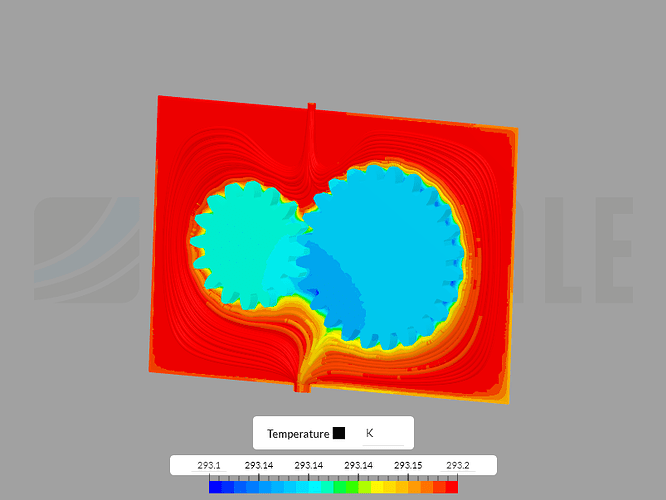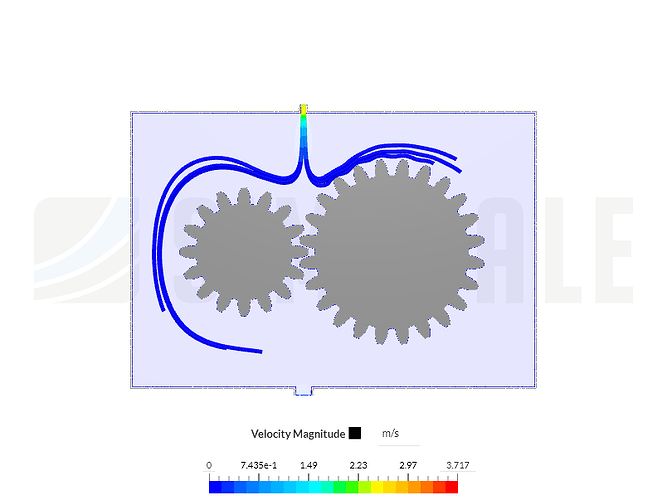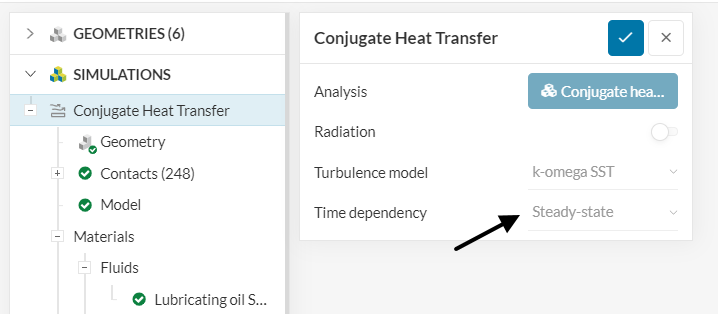hi, I need help for my simulation, here I run a conjugate heat transfer analysis, the goal is to see the temperature of the gears when oil lubrication is injected into the gears, I have a problem:
- is CHT analysis suitable to see the effect of oil cooling on gears?
- see in figure [2] the fluid flow does not flow into the middle of the gear gap, but the fluid flow becomes sideways, not as expected. why is that, is there a solution?
figure [1]
figure [2]
I will receive any help with a good and fast response.
this link project:
Hello.
Going through your questions:
- The only analysis type that would allow you to see the cooling effect of oil on the solid parts of the domain (i.e. the gears) is CHT. So yes, CHT is good for that.
However, you should be aware that your simulation has some limitations. These might cause the physics in the simulation to be different from your expectations:
- Contact friction is not accounted for;
- The gears are “standing still”;
- You currently have a steady-state simulation, which won’t give you a time-dependent value of temperature
- On a very general note, just because there are no traces going through a region in the domain, it doesn’t mean that there is no flow there. It just means that the traces that were generated were moving through other paths.
In your specific case, the differences that you are pointing out are mostly related to my second pointer (The gears are “standing still”). Rotation of solids is currently not available for CHT simulations - feel free to add a suggestion in the public roadmap page, though!
Cheers
1 Like


